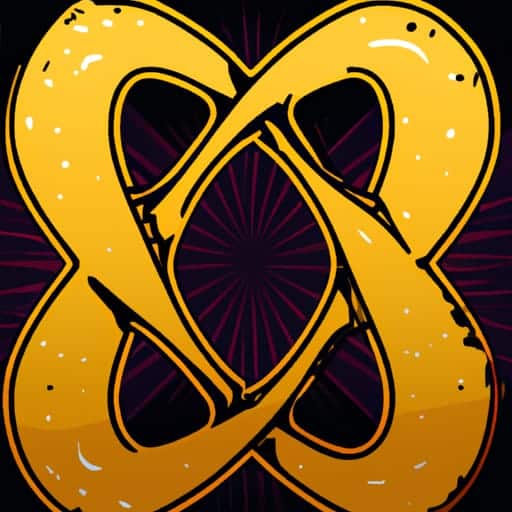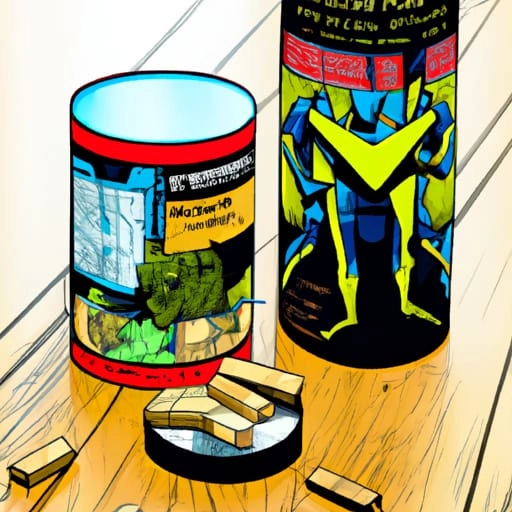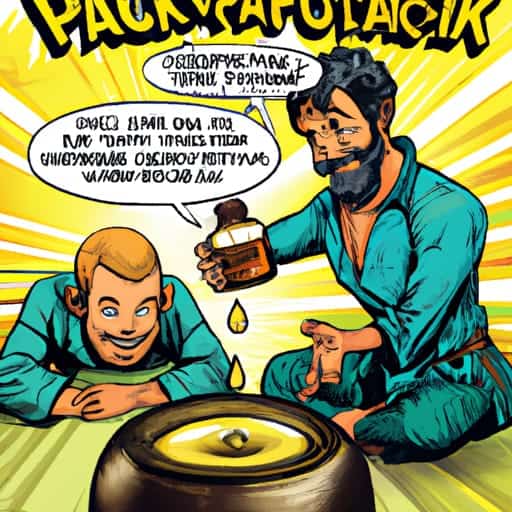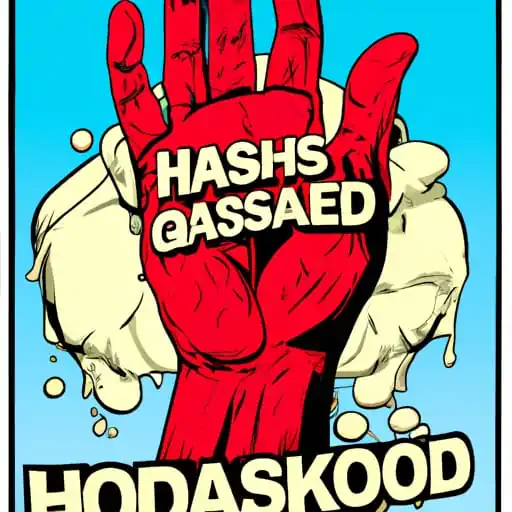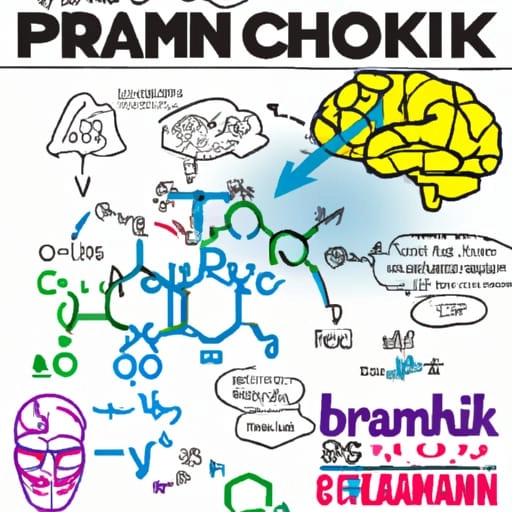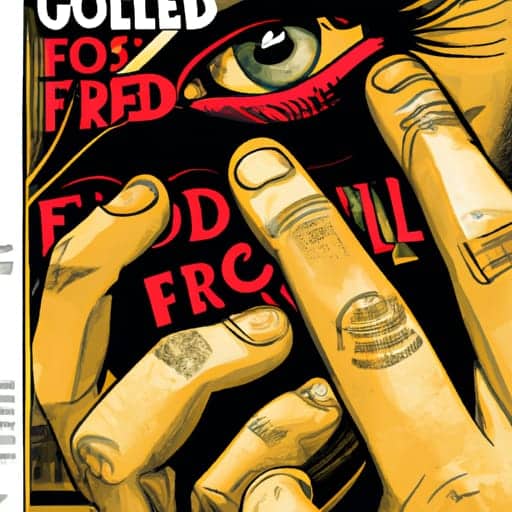OCD – What Are The Less Known Types?
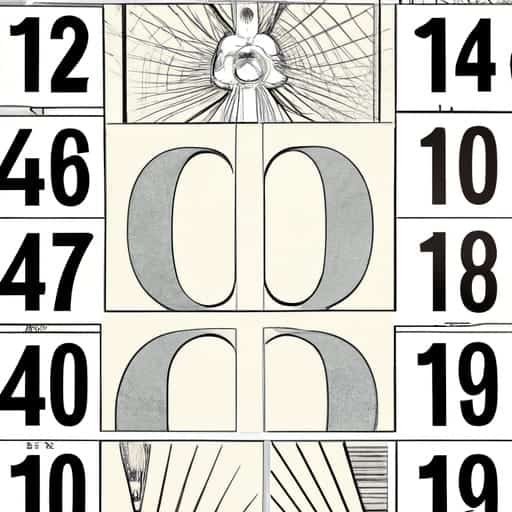
Did you know there are much less well-known types of obsessive compulsive disorder (OCD)? They are still a type of obsessive-compulsive disorder because they contain the core features of obsessive thoughts and repetitive actions.
These subtypes of OCD obsessions can be intrusive and distressing, but are hardly talked about? If you didn’t know this, and especially if you are an OCD sufferer, let’s change that right now. In this article, we will discuss lesser known types of obsessive-compulsive disorder (OCD), their symptoms, and how they affect people with the disorder.
We will discuss each OCD subtype below, but first a general overview of OCD.
First, What is OCD?
Obsessive-compulsive disorder (OCD) is a mental health condition characterized by intrusive thoughts and compulsive behaviors. The Diagnostic and Statistical Manual of Mental Disorders, or “DSM,” is a reference book about mental health and brain-related conditions and disorders. This book is written, edited, reviewed, and published by the American Psychiatric Association (APA). The 5th edition of the Diagnostic and Statistical Manual of Mental Disorders (DSM-5) says that Obsessive-Compulsive Disorder (OCD) is a condition marked by obsessions, compulsions, or both.
OCD patients can not control the thoughts that pop into their heads and these intrusive thoughts can trigger intense anxiety and panic. These mental compulsions generate compulsive rituals that have to be carried out a certain number of times, such as checking or hand-washing, or counting rituals. They do that by generating a bad feeling or tension inside the sufferer until they completed the action. There is a slight relief once it’s done, but the internal tension and anxiety build up again, and the ritual has to be repeated.
These unwanted thoughts lead to repetitive behaviors and though OCD is considered one of the anxiety disorders, it does have an overlap with involuntary movement disorders like tic disorder, Tourette’s, with is involuntary shouting of curse words, and related disorders.
Sometimes the intrusive thoughts are taboo, centered on socially unacceptable sexual obsessions or violent thoughts that must not be carried out. In these cases the sufferer takes responsibility for the thoughts, thinking that they must be a bad person for them even to occur. Of course this is not true as they have no control over the thoughts popping up. They can’t carry them out, and suffer terribly from trying to suppress these unwanted intrusive thoughts and the guilt that accompanies them.
Different types of OCD, cause stress Either way OCD is a mental illness that has a terrible effect on a person’s life.
OCD can lead to severe mental health consequences, such as money problems and relationship difficulties. These symptoms of OCD can severely affect a person’s quality of life and ability to function normally.

Less Common Forms of OCD
There are several types of obsessive-compulsive disorder (OCD) that people rarely talk about. Here we go through some of them.
1. Religious OCD
The first of the lesser known types of OCD is Religious Obsessive-Compulsive Disorder (OCD) is a type of OCD in which a person has religious or spiritual obsessions and compulsions that won’t go away and can’t be controlled.
Some of these obsessions are having doubts about one’s faith, being afraid of blasphemy, or worrying too much about morality or sin. Some people with compulsions pray too much, avoid certain people or places, or ask religious leaders for reassurance repeatedly.
People with religious OCD often feel guilty, ashamed, and alone because of their symptoms. This can make it hard for them to get help or tell others about their struggles.
2. Magical Thinking in OCD
Magical thinking is not a subtype as such, but is present in many forms of OCD. Magical thinking is a type of irrational thinking in which a person thinks that their thoughts, words, or actions can directly affect things that have nothing to do with them. People with obsessive-compulsive disorder (OCD) may think this way, and it can come out in the form of superstitions or rituals.
For example, a person with OCD may be obsessed with hurting someone with a knife. To stop this from happening, they may do something like avoid knives or check over and over that knives are locked away, thinking that this will stop the harm from happening. They may also think that certain words or actions have the power to stop bad things from happening.
Magical thinking can also show up as rituals for “good luck” or “bad luck.”
3. Excoriation Disorder
Excoriation disorder, also called skin-picking disorder or dermatillomania, is a condition in which a person picks, scratches, or digs at their own skin over and over again.
This can cause a lot of damage to the skin, like scabs, bleeding, and scars. People with excoriation disorder may pick at their face, arms, legs, or other parts of their bodies.
People often pick because they feel anxious, stressed, or bored, and picking can make them feel better or give them pleasure. But this relief rarely lasts long, and the person may then feel bad, embarrassed, or ashamed about picking.
Excoriation disorder can have a big effect on a person’s quality of life and sense of self-worth, and it can also cause other problems, like infections. Most of the time, therapy like cognitive behavioural therapy (CBT) or habit reversal training (HRT) is used to treat excoriation disorder. These types of therapy can help the person understand how to manage their thoughts and behaviours related to skin-picking.

4. PANDAS (pediatric autoimmune neuropsychiatric disorder)
PANDAS is closely related to OCD. Pediatric autoimmune neuropsychiatric disorders associated with streptococcal infections (PANDAS) is a rare and controversial condition that is thought to be caused by a streptococcal infection (like strep throat) that causes an abnormal immune response in the body. This abnormal response causes inflammation in the brain, which can cause or worsen symptoms of obsessive-compulsive disorder (OCD) and/or tic disorders (like Tourette’s Syndrome) in some children and teens.
PANDAS can cause sudden and severe OCD symptoms, like excessive worrying, checking things over and over, or doing the same thing over and over, as well as motor or vocal tics.
A person has PANDAS if they have OCD or tic symptoms and a streptococcal infection that happened around the same time that the symptoms started or got worse.
Researchers and health professionals still argue about whether PANDAS exists, and we need more research to learn more about this condition and what causes it.
PANDAS is treated in the same way as regular OCD, with the addition of antibiotics to treat the infection and anti-inflammatory drugs. But it’s important to remember that not all children with OCD or tic disorders have PANDAS, and not all children with a strep infection will get PANDAS.
5. ROCD (Relationship OCD)
Relationship Obsessive-Compulsive Disorder is a real thing (ROCD). It is a subtype of OCD that is marked by persistent, uncontrollable, and upsetting thoughts, doubts, and fears about a romantic relationship. These thoughts can be about things like how attractive or compatible the partner is or how much the person loves the other person. The person may also feel compelled to ask their partner or other people for reassurance, check their partner’s social media, or question the relationship.
ROCD can cause a person a lot of stress and make it hard for them to function in their relationship and other parts of their lives. It can also cause problems like mistrust, fights, and even separation or divorce.
It’s important to remember that relationship OCD is not the same as normal doubts or fears in a relationship. ROCD is a severe form of OCD that causes a lot of stress and makes it hard for the person to live their life.
6. POCD (Pedophilia OCD)
Symptoms of POCD include intrusive thoughts of sexual abuse or sexual arousal to sexual images of children, obsession with cleaning or washing compulsion, mental health issues such as depression and anxiety, social withdrawal, and sexual dysfunction. Individuals with POCD often experience shame and guilt and may engage in self-harm, such as skin picking or cutting, to reduce sexual arousal. Experts think POCD to be a form of obsessive-compulsive disorder (OCD) that involves sexual obsession.
With treatment, POCD can be manageable. Support from family and friends is vital for individuals living with this disorder. It’s helpful to join a support group or seek mental health treatment for help recovery. Effective treatment can help reduce intrusive sexual thoughts and compulsive behaviors. However, it can take months or even years before symptoms improve. If you are suffering from POCD, treatment may help improve your quality of life.
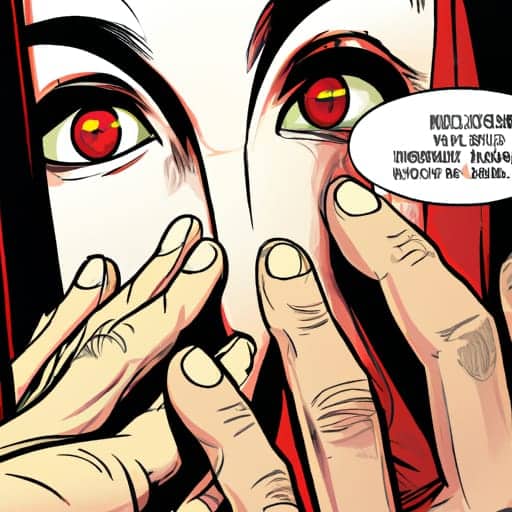
7. HOCD or SO-OCD (Homosexual or Sexual Orientation OCD)
Homosexual OCD (HOCD), also called Sexual Orientation OCD (SO-OCD), is a subtype of OCD that is marked by persistent, uncontrollable, and upsetting thoughts, doubts, and fears about one’s sexual orientation. These thoughts can be about things like whether they are gay, straight, bisexual, or have a “normal” sexual orientation, or whether they will “turn gay” or “turn straight.” The person may also feel compelled to seek reassurance from others, look up information about their sexual orientation, or do things they think will “prove” their sexual orientation.
HOCD can cause a person a lot of stress and make it hard for them to function in everyday life. It can also cause problems like mistrust, fights, and even separation or divorce. HOCD is a type of OCD that can be very upsetting for the person because it can be about something personal and sensitive like sexual orientation.
It is important to remember that HOCD is not a disorder of sexual orientation. Instead, it is a disorder of obsessive-compulsive symptoms related to sexual orientation. HOCD isn’t about being gay, straight, or bisexual. Instead, it’s about the disturbing thoughts and behaviours that come with it.
8. Harm OCD
Harm OCD is a subtype of obsessive-compulsive disorder (OCD) that is marked by persistent, uncontrollable, and distressing thoughts, images, or impulses about hurting oneself or others. These thoughts can be about things like hurting someone by accident while driving, causing a motor vehicle accident, hurting someone with a kitchen knife, or even killing someone. New mothers often fear they may harm their babies, though that is that last thing they will do.
These thoughts may come with a lot of worry and a feeling of having to keep bad things from happening. A core feature is a fear of loss of impulse control.
People with harm OCD may have compulsive behaviours like asking others for reassurance, avoiding certain situations or objects, or checking for harm over and over again. These compulsions are meant to ease the anxiety that the obsessions cause, but in reality, they can make the obsessions and anxiety last longer.
9. “Just Right,” OCD
Just Right OCD, also known as symmetry OCD or ordering OCD, is a subtype of obsessive-compulsive disorder (OCD) characterised by persistent, uncontrollable, and disturbing thoughts, images, or urges related to the desire for things to be “just right” or in a precise order. These thoughts may revolve around difficulties such as the necessity for objects to be organised symmetrically, the requirement for specific words or phrases to be repeated in a given order, or the need for certain chores to be accomplished in a specific order.
Individuals with Just Right OCD may engage in obsessive activities such as continually arranging and rearranging objects, checking for symmetry or precise sequences, or repeating certain words or phrases. These compulsions are meant to relieve the discomfort generated by the obsessions, but in actuality, they might prolong the cycle of preoccupation and worry.
10. Hoarding OCD
Hoarding OCD is a subtype of obsessive-compulsive disorder (OCD) that is characterised by persistent, uncontrollable, and distressing thoughts, images, or impulses related to getting, saving, and keeping a lot of things, even if they have little or no value. The person with hoarding OCD may have trouble getting rid of things, even when they don’t need them anymore. This can cause too much clutter in the home, which makes it hard to use the living space as it was meant to be used and may also be dangerous for health and safety.
People with hoarding OCD may also have trouble organising or putting things into groups, making decisions, or waiting until the last minute to do something. They may also feel shame, guilt, or embarrassment about how their home looks, which could make them not want to have people over.
Hoarding OCD can have a big effect on the person’s quality of life and on their relationships and their physical and mental health. Hoarding can cause problems like an increased chance of falling, starting a fire, or getting hurt in some other way, as well as social isolation and trouble getting help from professionals.
11. Animal Hoarding OCD
People with OCD who hoard animals have a subtype of hoarding disorder called “animal hoarding.” This is when numerous animals are bought, kept, and not even given basic care. People with animal hoarding OCD may feel compelled to get more animals, even if they can’t take care of them properly. This can cause the animals and the hoarder to live in overcrowded, unsanitary conditions. The person who hoards may have trouble seeing or admitting that the animals are living in poor conditions and that this is bad for their health and well-being.
Animal hoarders may have a lot of different animals, such as cats, dogs, birds, farm animals, and even exotic animals, and they may feel very attached to them. They may also have trouble letting go of the animals, even if they can’t take care of them anymore or if they’re hurting.
Animal hoarding can put both the animals and the person who does it in danger of their health and safety. Conditions can be dirty and too crowded, which can lead to illness and injury. The animals may also not get enough to eat or good veterinary care. The hoarder may also be at risk for physical injuries like falls or bites, as well as mental health problems like depression, anxiety, and post-traumatic stress disorder (PTSD).
Animal hoarding treatment Cognitive-behavioral therapy (CBT) is a type of therapy that is often used to treat OCD. In particular, there is a type of CBT called cognitive-behavioral therapy for hoarding disorder (CBT-HD) that is designed to deal with the unique symptoms of hoarding disorder. Selective serotonin reuptake inhibitors (SSRIs) are one type of medicine that can help ease symptoms.
It’s important to talk to a mental health professional who has experience treating OCD and hoarding disorder about the person’s specific worries. It’s also important to work with animal welfare groups and vets to meet the animals’ needs and make sure they are healthy and happy.

Brief Comment on Treatment of OCD
This article is about the subtypes of OCD, and does not focus on treatment. We have other articles on the site that discuss treatment options in more detail, but in summary:
Cognitive-behavioral therapy (CBT) and medication are the most common ways to treat OCD.
Cognitive-behavioral therapy (CBT) is a type of therapy that helps people with OCD learn to recognise and change negative patterns of thinking and acting.
Exposure and response prevention (ERP) is a type of Cognitive Behavior Therapy used to treat OCD.
Exposure therapy involves gradually exposing the person to the source of their obsession (like dirt or germs) while stopping them from doing their compulsions (such as feature in contamination OCD like excessive cleaning or hand-washing). This helps the person learn to deal with the anxiety caused by their fear of germs without doing the compulsion. Eventually, this leads to fewer symptoms.
Medication is often used to treat OCD as well. Selective serotonin reuptake inhibitors (SSRIs) like fluoxetine (Prozac), fluvoxamine (Luvox), sertraline (Zoloft), and clomipramine are the drugs most often given to people with OCD (Anafranil). SSRIs raise the amount of a chemical in the brain called serotonin, which can help reduce OCD symptoms.
In some cases, augmentation therapies, like adding other types of medication to SSRIs, or other types of psychotherapy, like Acceptance and Commitment therapy (ACT) or Mindfulness-based therapies, may also be used.
It’s important to remember that OCD should be treated in a way that’s right for each person, and that often the best way to do this is to use both medication and therapy. The treatment may take some time, and changes may need to be made to find the best way to help each person. For proper diagnosis and OCD treatment, it’s best to talk to a mental health professional.
Lesser Known Types of OCD: Conclusion
In the end, obsessive-compulsive disorder (OCD) is a complicated condition that can show up in many ways. Even though the classic form of OCD is well-known, there are other types of OCD that are less well-known but can be just as crippling. They all have the presence of obsessions. Knowing about these subtypes can help people who might have trouble with them get the right diagnosis and treatment.
Even though these subtypes of OCD may not be as well-known as traditional OCD, it is important to remember that they are just as real and valid. It’s also important to note that not everyone with these subtypes fits the exact criteria, but it’s important to get help from a professional if you think your thoughts and actions are making you feel bad and affecting your daily life.
If you or someone you know might be struggling with any of these types of OCD, you can find more information and help on our website, MoodMeds. You can find articles and information about these subtypes of OCD and other related topics on our website. This will help you understand and deal with your symptoms better. Remember that you are not alone on this journey and that you can get help.
I would recommend you seek out a clinical psychologist who specialises in cognitive behavioral therapy of OCD who can draw up a treatment plan for you.
Related Articles
Top 5 Herbs in Ayurveda for Treatment of OCD

